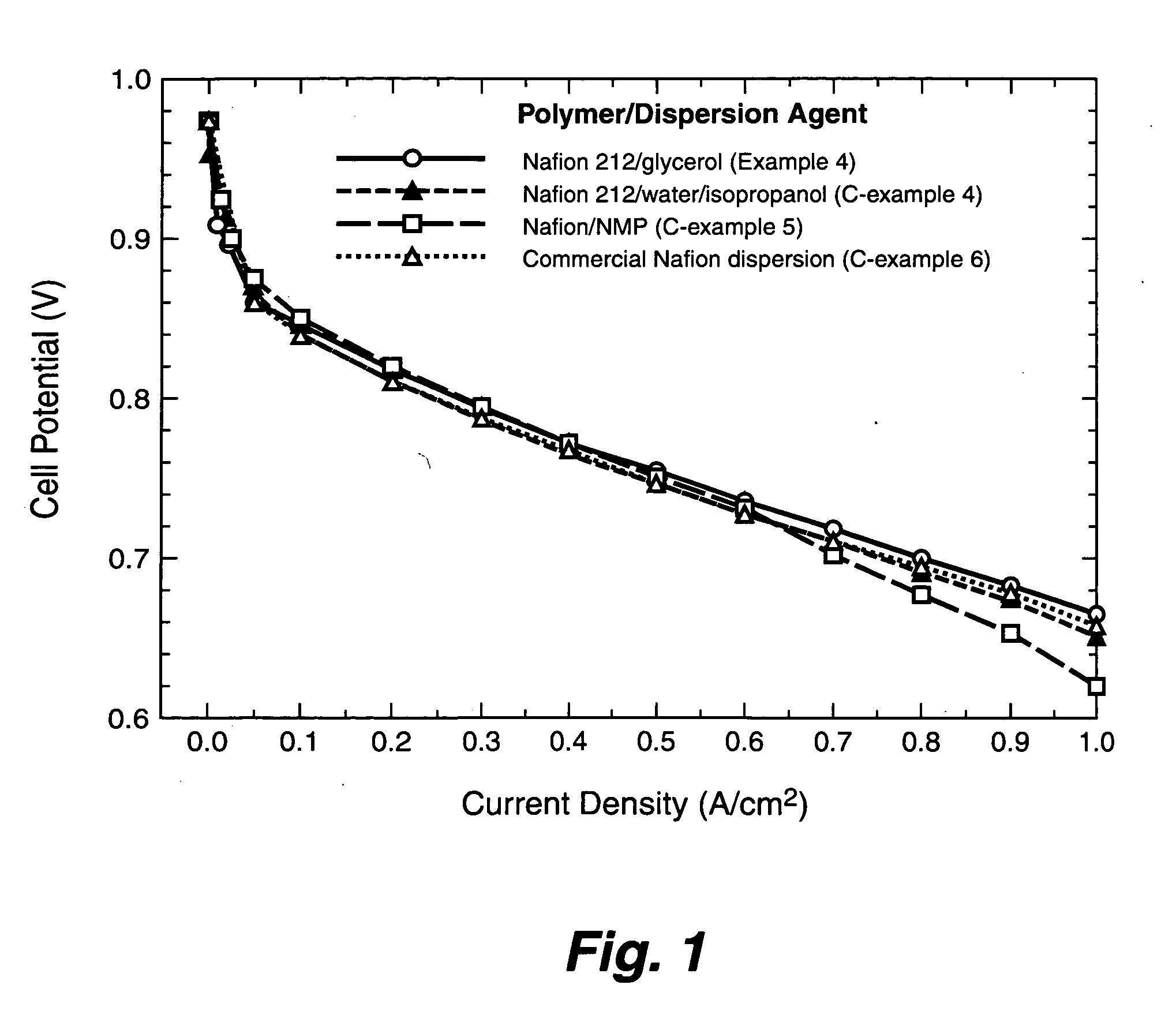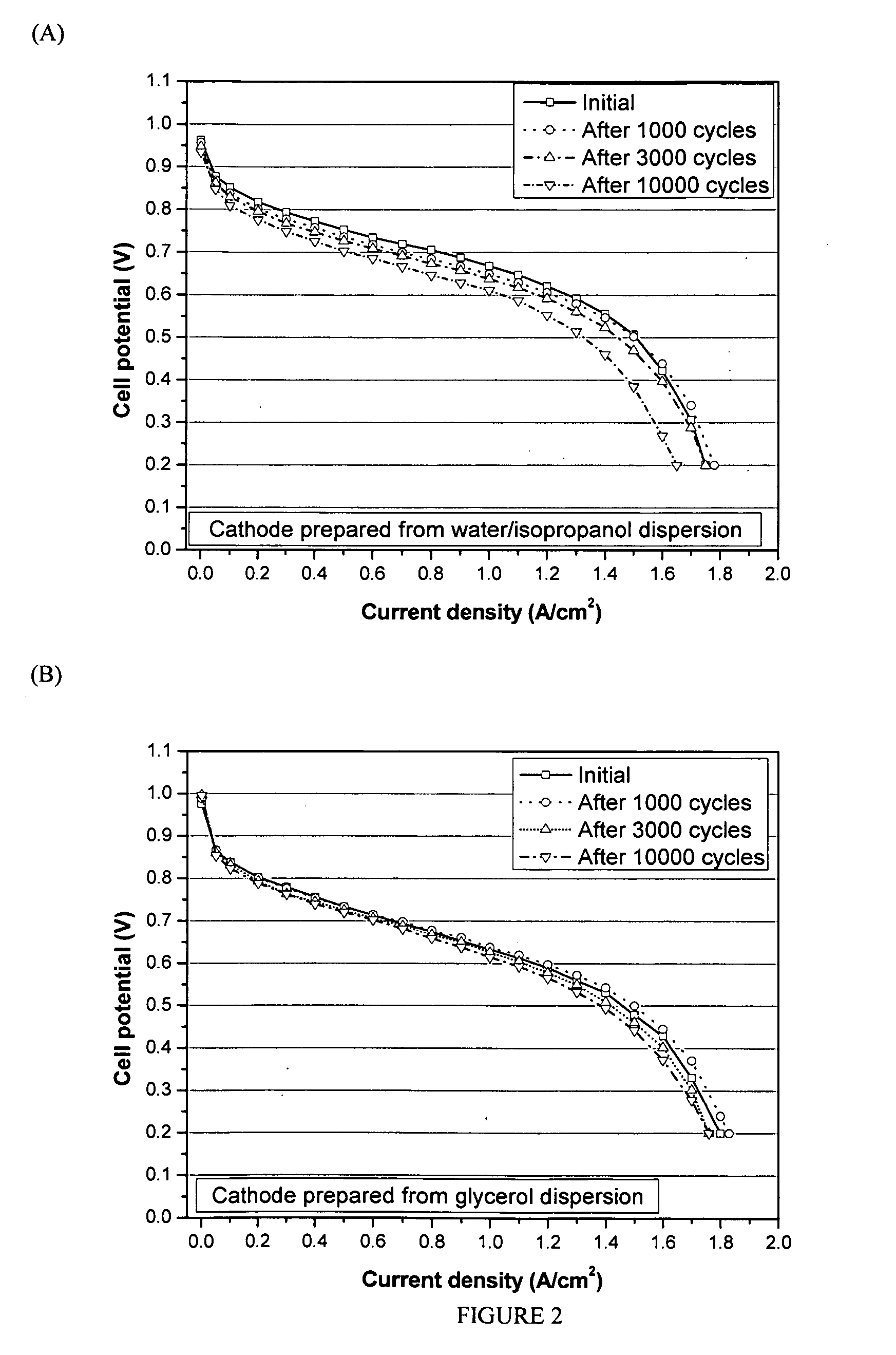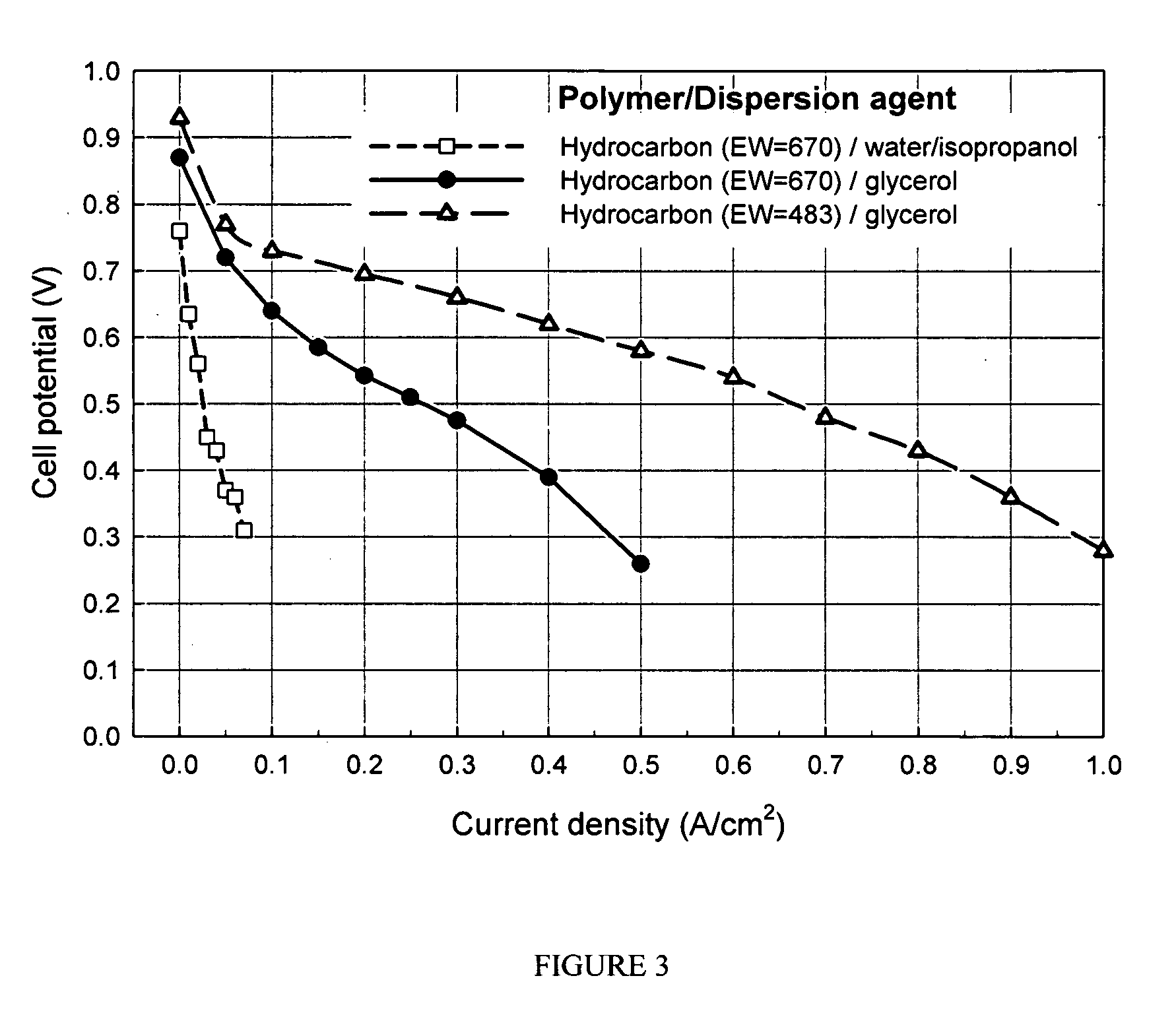Non-aqueous liquid compositions comprising ion exchange polymers
a technology of ion exchange polymers and compositions, applied in the field of non-aqueous compositions, can solve the problems of complex kinetics, mechanically brittle films, and tough films that cannot be obtained by heat treatment, and achieve the effects of low processing cost, high temperature, and long processing times
- Summary
- Abstract
- Description
- Claims
- Application Information
AI Technical Summary
Benefits of technology
Problems solved by technology
Method used
Image
Examples
example 1
[0034]21.57 g of a dispersing agent, 0.54 g of perfluorinated sulfonic acid (EW=1000-1100) with the functional groups having been hydrolyzed to SO3Na form (solid content 2.5 wt. %), and the polymer itself being in the form of membrane having a thickness of about 50 micrometer, were placed in a 60 ml vial. The vial was heated in a convection oven the temperatures shown in Table 1. Table 1 shows the dispersion state after the heat treatment.
TABLE 1PFSA dispersion Na+ formType ofBoilingProcessingDispersingdispersionpoint%temp. / timeNo.EWmediumagent(° C.)solid(° C. / hr)Dispersion1-11000MethanolAlcohol652.5 50 / 3−1-21000EthanolAlcohol782.5 50 / 3−1-310001-propanolAlcohol972.5 80 / 3−1-410002-propanolAlcohol822.5 60 / 3−1-51000Ethylene glycolAlcohol1972.5180 / 1+1-611002.5190 / 3−1-71000PropyleneAlcohol1882.5170 / 1+glycol1-810001,2 butanediolAlcohol1932.5170 / 2+1-910001,3 butanediolAlcohol2072.5 170 / 0.3+1-1010002,3 butanediolAlcohol1832.5180 / 3−1-1110001,4 butanediolAlcohol2305 200 / 0.5+1-1211002.5220 / 3...
example 2
[0037]21.57 g of a dispersing medium, 0.54 g of perfluorinated sulfonic acid (EW=1000-1100) with the functional groups having been hydrolyzed to —SO3H form (solid content 2.5 wt. %), and the polymer itself being in the form of membrane having a thickness of about 50 micrometer, were placed in a 60 ml vial. The vial was heated in a convection oven at the temperatures shown in Table 2. Dispersions from 1,4 butanediol and 1,2,4 butanetriol had white bubbles on top of the clear dispersion. 1H NMR indicated that those dispersion with bubbles contained ether compounds, likely due to a side reaction. Table 2 shows the dispersion state after the heat treatment.
TABLE 2PFSA dispersion H+ formType ofBoilingProcessingDispersingdispersionpointtemp. / timeNo.EWmediumagent(° C.)% solid(° C. / hr)Dispersion2-110001,4 butanediolAlcohol2302.5170 / 1+(side reaction)2-21100190 / 1+(side reaction)2-311001,2,4Alcohol2905190 / 1+butanetriol(side reaction)2-410001,5 pentanediolAlcohol2422.5170 / 1+2-51000PropyleneAlco...
example 3
[0039]The catalyst dispersion for thin film electrodes is prepared by thoroughly mixing the catalyst (20 wt % Pt on carbon supplied by Alfa AISER, Ward Hill, Mass.) and the polymer dispersion. 2.5 wt % Nafion™ dispersions were prepared from glycerol as described from Example 1 (1-14), respectively.
[0040]The following procedure may be used:
[0041]1 g of 2.5 wt. % Nafion™ dispersion in glycerol (prepared from Example 1-14) was mixed with 1 g of water, and 0.0625 g Pt / C in a small vial. An amount of TBAOH equal to a molar equivalent of the ionomer is added to convert the ionomer to a thermoplastic TBA+ form. The mixture is agitated with ultrasound to uniformly disperse the supported catalyst in the catalyst ink.
PUM
| Property | Measurement | Unit |
|---|---|---|
| Temperature | aaaaa | aaaaa |
| Temperature | aaaaa | aaaaa |
| Temperature | aaaaa | aaaaa |
Abstract
Description
Claims
Application Information
 Login to View More
Login to View More - R&D
- Intellectual Property
- Life Sciences
- Materials
- Tech Scout
- Unparalleled Data Quality
- Higher Quality Content
- 60% Fewer Hallucinations
Browse by: Latest US Patents, China's latest patents, Technical Efficacy Thesaurus, Application Domain, Technology Topic, Popular Technical Reports.
© 2025 PatSnap. All rights reserved.Legal|Privacy policy|Modern Slavery Act Transparency Statement|Sitemap|About US| Contact US: help@patsnap.com



